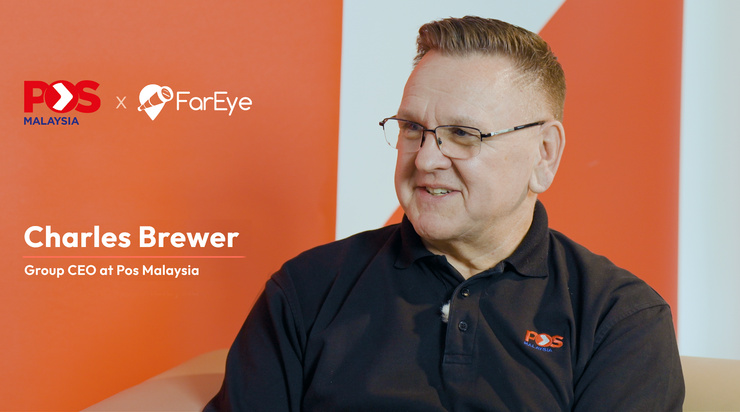- Pharmaceuticals
Critical Insights into Transporting Medical Devices: Solutions for Today's Logistics Challenges
The U.S. healthcare transportation services market was valued at $21.82 billion in 2017 and is projected to grow to $31.51 billion globally by 2026 with a CAGR of approximately 4.23% from 2018 to 2026. This growth highlights the increasing demand for efficient transportation of medical devices, which present unique logistical challenges in healthcare that require careful planning and execution to ensure safety, compliance and efficiency.
Medical devices are often sensitive to environmental factors such as temperature and humidity, making them particularly vulnerable to damage during transit. This risk can have dire consequences for patient care, as delays in delivery can disrupt treatment plans and jeopardize patient health.
To mitigate these risks, effective medical device logistics must incorporate practices such as secure packaging, real-time tracking, and strict adherence to regulatory standards. Logistics providers must implement robust strategies that ensure safe, efficient, and timely transportation. This includes investing in specialized packaging, employing trained personnel, and utilizing advanced tracking technologies to monitor shipments in real time.
By addressing these challenges effectively, healthcare providers can enhance patient outcomes and maintain the integrity of their medical supply chains. Focusing on continuous improvement and innovation in medical device logistics will further strengthen their ability to meet evolving demands.
Understanding the Unique Challenges in Medical Device Logistics
Transporting medical devices presents several unique challenges that must be addressed to ensure safety, compliance, and functionality. Each challenge requires careful consideration and management to maintain the integrity of the devices throughout their journey.
Compliance and regulatory requirements: Medical devices are subject to strict regulatory frameworks established by organizations such as the FDA and ISO. Compliance with these regulations is critical for ensuring that devices meet safety and efficacy standards. Manufacturers must navigate complex requirements related to packaging, labeling, and documentation, which can vary significantly across different regions and markets. Failure to comply can result in delays, fines, or even the inability to market the device.
Temperature and environmental sensitivity: Many medical devices such as dialysis equipment, cardiac care devices, and blood analyzers & diagnostic tools, are sensitive to temperature fluctuations and environmental conditions. For instance, certain devices must be kept within specific temperature ranges to maintain their efficacy and sterility. Transporting such medical devices requires specialized packaging that can withstand varying conditions during transit, including extreme temperatures or humidity levels. Failure to maintain appropriate environmental conditions can compromise the device's performance.
Handling and packaging requirements: Proper handling and packaging of medical devices are essential to prevent damage during transportation. These devices often require specific cushioning materials and configurations to protect against impacts, vibrations, and other mechanical stresses. Additionally, packaging must ensure sterility and prevent contamination. Manufacturers must optimize their packaging solutions through rigorous testing to protect the device throughout its transport lifecycle.
Data integrity and traceability: Maintaining data integrity and traceability throughout the transportation process is crucial for accountability and compliance. This involves tracking the device's journey from manufacturer to end-user, ensuring that all relevant data is recorded accurately. Any discrepancies in data can lead to significant issues, including recalls or legal liabilities. Implementing robust tracking systems is essential for verifying that devices have been transported correctly and safely.
Time-sensitive delivery: Many medical devices are urgently needed in healthcare, making timely delivery a critical medical device distribution challenge. Delays in transportation can have serious implications for patient care, especially for life-saving devices. Logistics providers must ensure that medical device deliveries are made on schedule while also adhering to regulatory requirements. This often requires advanced planning and contingency strategies to mitigate potential delays.
Risk of damage or loss in transit: The risk of damage or loss during transportation is a significant concern in medical device logistics. Devices may be subjected to rough handling or accidents during transit, which can lead to costly damages or loss of critical equipment. To mitigate these risks, businesses must invest in robust packaging solutions and insurance coverage while also training logistics personnel on best practices for handling sensitive medical equipment.
Customs and cross-border regulations: Transporting medical devices across international borders introduces additional medical device distribution challenges due to varying customs regulations and import/export laws. Each country has its own requirements regarding documentation, tariffs, and compliance standards. Navigating these regulations requires careful planning and expertise in international logistics to avoid delays or penalties that could disrupt supply chains.
Impact of Logistics Challenges on the Healthcare Sector
Logistics challenges in healthcare sector significantly impact patient care and operational efficiency. The COVID-19 pandemic exposed vulnerabilities in healthcare supply chains, leading to shortages of essential medical supplies and equipment. These challenges stem from various factors, including infrastructure limitations, where inadequate transportation networks and warehousing facilities hinder timely deliveries. Additionally, a fragmented supply chain complicates coordination among multiple stakeholders, resulting in inefficiencies and delays. Maintaining the integrity of temperature-sensitive products poses a critical challenge. Inadequate medical device logistics can compromise the efficacy of vaccines and pharmaceuticals, especially in regions with diverse climates.
The dependency on outdated technology worsens these issues, as many healthcare providers struggle with manual inventory management processes that limit visibility into supply status. To address these challenges, the healthcare sector must invest in modern technologies such as blockchain for tracking and transparency, as well as RFID systems for real-time inventory management. By adopting these innovations, healthcare logistics can become more resilient, ensuring that medical supplies are delivered accurately and efficiently, enhancing patient outcomes and satisfaction.
Best Practices for Effective Medical Device Transportation
Effectively transporting medical devices is critical to ensuring patient safety, regulatory compliance, and operational efficiency. Here are some of the best practices to follow in medical device logistics:
Real-time visibility: It is vital to track and monitor the location and condition of medical devices throughout their journey. Using technologies such as GPS and IoT sensors provide continuous updates on shipment status. By having real-time data, businesses can quickly respond to disruptions, optimize routes, and ensure that devices are delivered in a timely manner. Accurate real-time visibility not only improves operational efficiency but also enhances customer satisfaction by providing accurate delivery estimates and proactive communication about any potential delays.
Temperature control: Many medical devices such as insulin pumps, vaccines, diagnostic kits, and surgical implants, require strict temperature control during transportation. Implementing temperature monitoring systems ensures that medical devices remain within specified temperature ranges throughout transit. This practice involves using insulated packaging, temperature-controlled vehicles, and real-time monitoring systems that alert stakeholders if temperatures deviate from acceptable limits. Maintaining proper temperature conditions is vital for preserving the integrity and safety of these medical devices.
Compliance with regulations: Adhering to regulatory standards is essential in medical device logistics. Enterprises must stay informed about local and international regulations governing the transport of medical products, including documentation requirements and safety standards. Compliance not only mitigates legal risks but also enhances trust with healthcare providers and patients. Regular audits and training on regulatory changes help ensure that all personnel are aware of compliance requirements and can act accordingly during transportation processes.
Security measures: Implementing robust security measures is crucial while transporting medical devices. This includes using tamper-proof packaging, GPS tracking for real-time location monitoring, and secure storage facilities. Additionally, conducting background checks on transportation personnel and employing security personnel for high-value shipments can significantly reduce the risk of theft or damage. Ensuring the security of medical devices helps maintain their integrity and protects the assets.
Efficient route planning: Efficient route planning involves analyzing traffic patterns, weather conditions, and potential obstacles to determine the best paths for transporting medical devices. Utilizing advanced logistics software can facilitate dynamic routing that adapts in real time to changing conditions. This practice not only minimizes transit times but also reduces costs associated with fuel consumption and vehicle wear & tear. Effective route planning is essential for ensuring timely deliveries while optimizing resource use.
Proof of delivery: Establishing a reliable proof of delivery system is vital for accountability in the transportation process. Electronic proof of delivery can include digital signatures upon delivery, photographic evidence of package condition, or automated notifications sent to stakeholders once a delivery is completed. Clear proof of delivery helps resolve disputes quickly and provides a transparent record of transactions, which is especially important in regulated environments where traceability is required.
Automated communication: Automated communication systems enhance coordination among all parties involved in the transportation process. By utilizing automated alerts and updates regarding shipment status, businesses can keep the stakeholders informed without manual intervention. This practice improves responsiveness to issues as they arise and helps build better relationships with customers by providing timely information about their orders.
Sustainability practices: Incorporating sustainability practices into medical device logistics not only benefits the environment but also helps enhance the brand reputation. Businesses should opt for eco-friendly packaging materials, optimize routes to reduce carbon footprints, and utilize zero emission vehicles. Moreover, implementing recycling programs for packaging materials contributes to a circular economy approach in logistics operations.
Training and education: Regular training and education for personnel involved in the transportation process helps mitigate medical device distribution challenges and are essential for maintaining high service standards. Training should cover topics such as compliance regulations, handling procedures for sensitive devices, security protocols, and customer service skills. Well-trained staff are better equipped to handle challenges effectively and ensure that all best practices are followed during transportation.
Leveraging Technology Solutions to Improve Medical Device Delivery
The integration of advanced technology solutions in the medical device logistics process enhances efficiency, reliability, and compliance. Below are some key technological solutions that are helping businesses overcome logistical challenges in healthcare, pharmaceutical, medical & drugstore distribution logistics:
Dynamic route optimization: Dynamic route optimization uses advanced algorithms to determine the most efficient delivery routes in real time. It helps the delivery fleet adapt to changing conditions such as traffic, weather, and delivery schedules, ensuring that medical devices reach their destinations promptly. FarEye utilizes AI-powered route optimization capabilities that allow businesses to optimize delivery paths dynamically, reducing transportation costs and improving service levels.
Real-time tracking and visibility: Real-time tracking provides the stakeholders with up-to-date information on the location and status of deliveries. This transparency is crucial for managing expectations and enhancing customer satisfaction. FarEye’s real-time visibility platform offers comprehensive visibility into the delivery process, enabling businesses to monitor their shipments and provide customers with accurate updates on their orders.
Predictive analytics for demand forecasting: Predictive analytics leverages historical data and machine learning algorithms to forecast future demand. By analyzing patterns and trends, healthcare providers can better anticipate inventory needs, reducing the risk of stockouts or overstock. This foresight enables more efficient inventory management and ensures that critical medical devices are available when needed, improving patient care outcomes.
Inventory management: Smart inventory management systems utilize automated technologies to optimize stock levels of medical devices. These systems track inventory in real-time, alerting when supplies are low or when items are nearing expiration. By employing algorithms that consider usage rates and lead times, businesses can maintain optimal inventory levels, minimizing waste and ensuring that essential devices are always on hand.
Temperature and environment monitoring: Temperature and environment monitoring are crucial for the safe transport of temperature-sensitive medical devices. Using IoT sensors, businesses can continuously monitor conditions during transit to ensure compliance with storage requirements. Alerts can be triggered if temperatures deviate from acceptable ranges, allowing for immediate corrective actions to prevent spoilage or damage to sensitive equipment.
Automated alerts for delivery delays: Automated alert systems notify the relevant parties about potential delivery delays in real time. By integrating with tracking systems, these alerts can inform healthcare providers about changes in estimated delivery times due to unforeseen circumstances such as traffic or weather disruptions. This proactive communication helps manage expectations and allows healthcare facilities to adjust their operations accordingly.
AI-driven delivery scheduling: AI-driven delivery scheduling employs advanced algorithms to optimize delivery timelines based on factors such as vehicle availability, driver schedules, and delivery windows. By automating this process, businesses can ensure that deliveries are made efficiently. FarEye employs AI algorithms to create smart delivery schedules that maximize resource utilization while minimizing delays. It helps reduce human error in scheduling and enhances overall operational efficiency.
Compliance tracking and reporting: Compliance tracking solutions help businesses adhere to regulatory standards governing the transportation of medical devices. These systems automate documentation processes and maintain records of temperature logs, delivery confirmations, and other critical compliance information. By simplifying reporting requirements, businesses can ensure they meet industry regulations while minimizing risks associated with non-compliance.
Contactless and secure delivery options: Contactless delivery options enhance safety by minimizing physical interactions during the delivery process. Utilizing secure digital signatures or verification methods ensures that recipients confirm receipt without direct contact. FarEye supports contactless delivery methods through its platform, enhancing security while ensuring that medical devices are delivered safely. This approach is particularly valuable in healthcare, where infection control is paramount.
Data analytics for continuous improvement: Data analytics provides insights into logistics performance by analyzing various metrics related to delivery times, costs, and customer satisfaction. Businesses can use this data to identify inefficiencies within their supply chains and make improvements accordingly. FarEye’s data analytics capabilities provide insights into operational efficiency, helping businesses implement continuous improvements in their delivery systems.
Last mile execution: Last mile execution is crucial for ensuring that medical devices reach their final destinations efficiently. FarEye’s intelligent delivery orchestration tools enhance last mile logistics by optimizing routes and managing resources effectively. This focus on last mile execution helps improve customer satisfaction by ensuring timely and reliable deliveries.
Hyperlocal capabilities: FarEye offers hyperlocal delivery capabilities that cater to the unique needs of local markets. By utilizing advanced routing and scheduling algorithms, businesses can execute on-time doorstep deliveries of medical devices and pharmaceuticals locally. This approach not only enhances service levels but also reduces transportation costs associated with long-distance deliveries.
Conclusion
The transportation of medical devices is a complex and critical aspect of the healthcare supply chain, characterized by unique challenges that must be navigated to ensure the safety and efficacy of these essential products. As the market for healthcare logistics continues to expand, the importance of addressing issues such as regulatory compliance, environmental sensitivity, and timely delivery becomes increasingly evident. The implications of effective transportation extend beyond logistics; they directly impact patient care and health outcomes, reinforcing the necessity for a robust and reliable system. Continuous advancements in technology and logistics practices are essential to meet the evolving demands of the healthcare sector, ultimately enhancing the integrity of medical supply chains and ensuring that patients receive the timely care they require.

Komal Puri is a seasoned professional in the logistics and supply chain industry. As the AVP of Marketing and a subject matter expert at FarEye, she has been instrumental in shaping the industry narrative for the past decade. Her expertise and insights have earned her numerous awards and recognition. Komal’s writings reflect her deep understanding of the industry, offering valuable insights and thought leadership.
Let's Talk to Our Experts and Optimize Your Deliveries Today!
An expert from our team will reach out within 24 hours
Related resources



